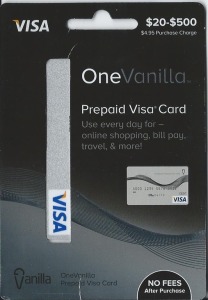I have previously written on requested topics from readers seeking a more in-depth analysis on subject matter related to the travel world, specifically questions geared toward seeking ways of earning and burning travel miles, points, and rewards to gain a more enjoyable, memorable travel experience. Such topics have included my recent breakdown of Structuring in a two-part series:
Part I – What is Structuring: The Law and Elements of the Federal Crime
Part II – Structuring: Caselaw, Civil Forfeiture, and the Future
This post turns our attention to newly proposed government regulations in regards to Prepaid Cards.
The business model of prepaid cards in the consumer marketplace seems to continue to grow in use, popularity, and variety every year. In fact, as quoted from the proposal, a 2013 study by the Board of Governors of the Federal Reserve System reported that compared with noncash payments such as credit, debit, automated clearing house (ACH), and check, prepaid card payments increased at the fastest rate from 2009 to 2012, noting that prepaid card payments reached 9.2 billion transactions in 2012 (up from 5.9 billion in 2009). (See the 2013 Federal Reserve Payments Study.)
As such, government rules, regulations, and laws must continue to evolve with the changes every time a new bird is hatched or a new flavor hits the market. Governmental controls hope to not turn the consumer blue, as the products in prepaid transaction systems are more than just vanilla.
In the December 23, 2014 issue of the Federal Register, we find extensive Proposed Rules (235 pages) on:
Bureau of Consumer Financial Protection – 12 CFR Parts 1005 and 1026
Prepaid Accounts Under the Electronic Fund Transfer Act (Regulation E)
and the Truth in Lending Act (Regulation Z)
In general, the proposal would create comprehensive consumer protections for prepaid financial products, including establish fee limits and liability limits for unauthorized acts, as well as new disclosures and other requirements.

Here are some highlights that you may find interesting involving fees:
Define: “Prepaid Cards”
When examining any law, rule, regulation, ordinance, and the like, you cannot overlook the importance of knowing specifically if it is, in fact, applicable to your specific inquiry. In this case, what constitutes a “prepaid card” under these Federal Rules? How is it defined?
The proposal would generally cover those prepaid accounts that are cards, codes, or other devices capable of being loaded with funds and usable at unaffiliated merchants or for person-to-person transfers, and are not gift cards (or certain other related types of cards). A new definition of ‘‘prepaid account’’ would be established within Regulation E to reflect this cover of popular prepaid card products not presently regulated under Reg. E.
As the concept of the “virtual wallet” continues to advance, this proposed definition would include mobile and other electronic products that can store funds.
Prepaid Card Fees
– Periodic Fees (e.g. monthly service fee): Disclosure would be required for any fee charged for holding a prepaid account assessed on a monthly or other
periodic basis. Such fees may be for the financial institution solely possessing a prepaid account for a period of time, whether the fee is charged monthly, annually, or for some other period of time. A financial institution would be required to disclose this fee in the top-line of the short form disclosure.
The Bureau believes that all prepaid accounts should disclose such a periodic fee, or the absence thereof, for several reasons.
First, the Bureau’s analysis of fee data indicates that many prepaid accounts charge a recurring fee, typically on a monthly basis.
Second, the Bureau believes a periodic fee is one that consumers will likely pay no matter what other fees they incur because it is imposed for maintaining the prepaid account, unless a financial institution offers a way for a consumer to avoid that fee (e.g., through the receipt of a regular direct deposit or maintaining a certain average daily account balance). Those prepaid accounts that do not assess a periodic fee often charge other fees instead, typically per purchase fees. The Bureau therefore believes that the lack of a periodic fee is also an important feature of a prepaid account that should be included in the top-line to allow consumers to more easily identify this trade-off between periodic fees and per purchase fees.
Third, the Bureau believes that the existence of a monthly fee (or lack thereof) is typically a key factor in a consumer’s decision about whether to acquire a particular prepaid account. Additionally, in the Bureau’s testing, participants frequently cited periodic fees as one of the most important factors influencing their decision about which prepaid account product to acquire. (My emphasis added.)
– Per Purchase Fees: Disclosure of any fees for making a purchase using a “prepaid account” would be required, whether with or without a PIN or signature, or via point-of-sale terminals, telephone, online or by any other means (Proposed § 1005.18(b)(2)(i)(B)(2)).
– ATM Withdrawal Fees: Disclosure of any ATM withdrawal fees including (1) any fee to initiate a withdrawal of cash in the United States from a prepaid account within the financial institution’s network or a network affiliated with the financial institution and (2) outside such network (Proposed § 1005.18(b)(2)(i)(B)(3)).
– Cash Reload Fees: Disclosure of any fee for loading cash into a “prepaid account” (Proposed § 1005.18(b)(2)(i)(B)(4)).
– Customer Service Fees: Disclosure of any fee for calling the financial institution or its service provider, including an interactive voice response system, about a consumer’s prepaid accounts using the term (Proposed § 1005.18(b)(2)(i)(B)(6)).
– Inactivity Fee: Disclosure of any fee for non-use, dormancy, or inactivity on a prepaid account, as well as the duration of inactivity that triggers a financial institution to impose such an inactivity fee (Proposed § 1005.18(b)(2)(i)(B)(7)).
– Incidence-Based Fee (“The Catch-All”): Disclosure of three additional ‘‘incidence-based’’ fees not already disclosed elsewhere on the disclosure short form that are incurred most frequently for that particular prepaid account product (Proposed § 1005.18(b)(2)(i)(B)(8)).
If a financial institution offers several prepaid account products, the incidence-based fees analysis would be conducted separately for each product, based on usage patterns in the prior 12-month period. Thus, the incidence-based fees provided to a consumer on the short form disclosure could vary from one product to the next depending on which fees consumers incurred most frequently for a particular prepaid product.
Basically, by requiring disclosure of a prepaid account product’s most commonly incurred fees, the consumer would be further protected when the prepaid card companies try to beat the new rules with fee variations against the accounts that do not technically meet the definition to be on the prominent short form disclosure.

In-Depth
There is a TON of information in this publication that some of you manufactured spenders or prepaid card aficionados may find interesting. If you want to get a more in-depth review of these proposed rules and all the policies, studies, legalities and consumer “needs” evaluated by the government, take a look at the first 25 or so pages! Enjoy!
____
@travelblawg
facebook.com/travelblawg
Subscribe in the sidebar!
Disclosure of Material Connection: Some of the links in the post above are “affiliate links.” This means if you click on the link and purchase the item, I will receive an affiliate commission.











Is there anyway to know how this is going to affect prepaid cards? For example, banks look for transactions around the $10K mark. However, prepaid cards usually have limits set much lower than that. Is there anyway to know what would cause them to file a SAR? Or, what would/could happen if they do?
CTR reporting requirements do include “prepaid access” transactions. As I’ve mentioned in my comments to my Structuring posts, it’s hard to quantify what leads to a SAR as it is a subjective evaluation on a case specific basis. Not to mention a lot of confusion in the retail and banking industries when it comes to prepaid products, internal policies, gov regs, etc. The chips are still falling into place to catch up to the evolving prepaid market and how criminal element may (and has) taken advantage of it.
Sorry I cannot give a more specific answer.